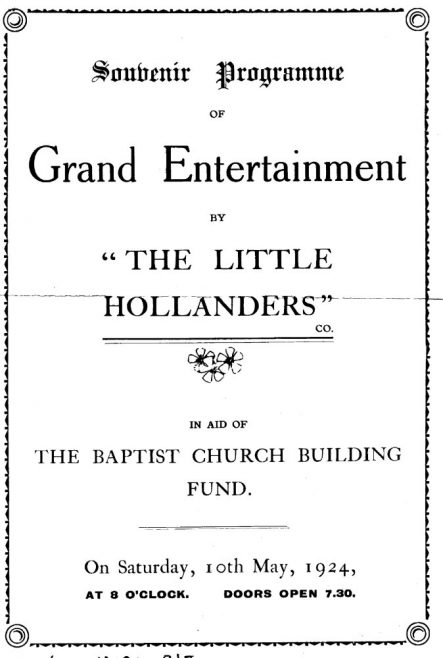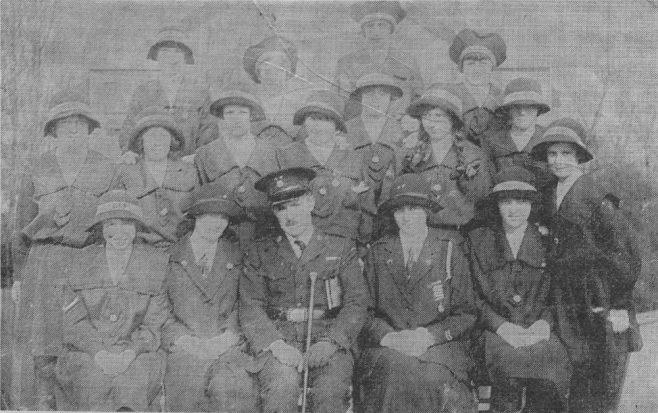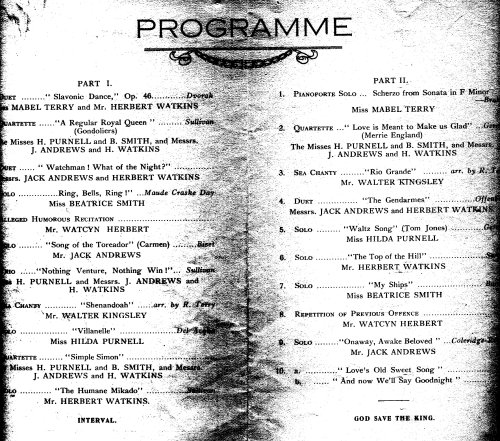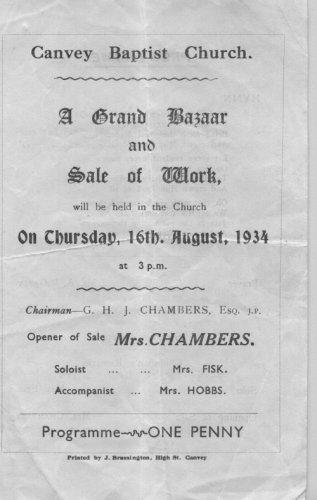Leigh Beck Baptist Church: The beginning
'The First Hundred Years'
God’s Blessing
As we celebrate 100 years of Canvey Island Baptist church, Leigh Beck, this historic milestone is a testament to the faithfulness and sovereignty of God. It is also a tribute to many who have gone before; men and women, who laid a sound foundation for growth in this corner of God’s vineyard.
How it all started
In 1898, it is said that a gentleman named Ebinezer Howard held the view that all new towns should be built with more pleasant surroundings, and he made a start at Letchworth Garden city. This was such a success that the better known Welwyn Garden city was built. Then men started to look east, to see if something similar could be done, and they chose CANVEY ISLAND. According to Aubrey Stevens a Mr Frederick Hester of 25 Stanley Road, Southend on Sea formed a Company and bought land on Canvey Island from a Mr Henry Cole of West Tilbury, for £3,095 in 1901. After laying out the ground with plots and roads, plots of ground were then put up for sale. Large notices were put up in London saying the sales would be held. The rail fare was 2/6d – a drive across the Island and a lunch. The advertised sale of land on the Island brought a number of people from the City and this is when the seed was sown for Canvey Island Baptist Church.
Religious life on the Island has an interesting history, for in 1631 a Dutch chapel was built on the island to cater for the needs of the engineers and workers from Holland, who had settled here after they had built the island’s first sea defences. The first English church was built in 1712 and replaced by another erected in 1745. In 1875 a parish church was put up which was superseded by the provision of the present parish church of St. Nicholas.
A few of the men that came down to the Island in 1901 were Christians and the only place for worship they could find was the village Church of St. Katherine’s which was too far away from the Point end of the Island. It was reported by Aubrey Stevens, the names of three of these men were Mr Brown, Mr Green and a Mr Pink. (a colourful lot of Vicars!) A Mr Cox, who owned a café at Leigh Beck offered his premises to be used for worship. In 1900 these few faithful met regularly for worship and prayer in the café and this was the beginning of what is known today as Canvey Island Baptist Church.
The room at the café soon became too small for the meetings and in 1902 a former auction room was hired and used as a meeting place. In 1903 the auction room was purchased by a London Merchant, Mr Cauldwell (who had moved to the Island so that his wife’s health might improve). The room was rebuilt into a hall which became the Union Mission. This was later called the Union Chapel. Under Mr Cauldwell’s leadership, the work of the community continued to progress.
At a later date, the property was purchased by a retired solicitor and pastor, Pastor Engall. Since he had strong Baptist leanings it can be said that he was the pioneer of the Baptist cause on Canvey. (A memorial tablet to Pastor Engall was found by Jenny Stacey (member of Leigh Beck Church) in the office of her father (Aubrey Stevens) on 23rd January 1998. The Sunday School was started in 1910 by Major Craig, Mrs Evans and Mrs Shanon.
After Pastor Engall’s death in 1911, the work was continued by several faithful servants, including Mr Woods of London City Mission, Mr Brain and Mr Gamble.
Under Mr Gamble’s Leadership the Church continued to grow until 1923 when it was found necessary to look once again at the accommodation. As a result the whole hall was practically rebuilt and enlarged by Mr Fisk, a local builder, and husband of one of the Church members. In the following year two vestries were added.

Canvey Hall at Leigh Beck, 1911
We have also come across an old photograph and an account taken from a book, which we are given to understand from records that were in the possession of Aubrey Stevens was an old Canvey Guide published about 1905. This reads as follows:
DALSTON HALL……..Until recently there were no religious services at the eastern end of the Island, partly owing to there not being any building that could be used for that purpose. An earnest desire for Gospel services having been expressed by residents and visitors, steps were taken by one of the latter to erect a modest edifice that would be suitable as a place for public worship. Accordingly ‘Dalston Hall’ was built, facing the London Road, which has sitting accommodation for about 70 persons. The first minister was Mr T Wood, a member of the London City Union, the Rev A Braine, formerly of Victoria Park, London and Milton, Nova Scotia, now officiates in that capacity. Services are usually held on the Lord’s Day in the summer at 3.00 pm (expressly for children) and at 6.30 pm; occasionally at 11.00 am. With Communion Service by special arrangement. They are undenominational, the idea being to have building for Gospel work rather than one of a denominational character; the word Evangelical fairly describing the teaching given here.
Apparently Dalston Hall was later called Canvey Hall, which in effect became Canvey Baptist Church.
***
In 1924 the building was then taken over by the Baptist Union of Great Britain and Ireland and became Canvey Baptist Church. The Church was received in the Essex Baptist Association and the Rev. W White became its’ moderator.
During the year of 1924 the girls Life Brigade was formed under the captaincy of Mrs W Kingsley. The Life Boys team also commenced at the church

A souvenir programme dated 20th May 1924 . An evening of Entertainment in aid of the Church Building fund
From records dating 1927 we find that the Rev. W White (Church Moderator) worked in conjunction with the Rev. R W Philips (part time Student Pastor). We cannot trace when Rev. Philips first started his work at Leigh Beck.
The work of the Church now spread to other parts of the Island. A series of cottage prayer meetings were organised and continued every Sunday until 1926 when a gift of land from Mr Chambers, made it possible to build a second hall (at a cost of £350) which later became the Winter Gardens Baptist Mission.
The Church at this time felt it was in need of a full time Minister but the Rev. Phillips did not want to be considered for this post. After many deliberations by the members of the Church the Rev Thomas Douglas was called to be the Pastor of Leigh Beck and he commenced this work on the 1st January 1928. Rev. Douglas from Upwell, became Pastor of both Churches (Winter Gardens and Leigh Beck). He had been highly commended by Spurgeon’s Baptist College.
At this time in the Church’s life, there was a property (bungalow) belonging to the Church, which is believed to have been situated behind the Church, where we now have the car park. This bungalow was not thought to be suitable for whatever reason for the new Minister and it was also being rented out to a Church member (a Miss Powell). After many deliberations of where to house the ‘new man’ the Church formed a ‘sub-committee’. (Baptists world wide are known for their ‘committees!) This sub committee, which was made up of Messrs. Pickering, Penny and Yeomans, were appointed to the ‘obtaining of a suitable building’. Within a short time, suitable ground had been decided upon at the cost of £13 per plot at a nearby road called Wichell Avenue(now known as Woodville Road) and tenders had been put out to local builders: Messrs Fielder, Wainwright, Fisk and Jordan.

Winter Gardens Mission in the early days.
Mr Wainwright secured the contract of building the manse in Wichell Avenue at the grand price of £335!! Now all this happened in the month of October/November 1927 and 2 months following – January 1928 the bungalow was competed and ready for habitation!
Arrangements were in hand for the ‘Recognition Services’ (what we now call the Induction Service of a new Pastor). These Services were planned for March 11th and also March 15th. All the members were busy with arranging the guest list, the seating and even- quote – ‘Buses were being provided at a cheap rate to bring to and from Canvey, the friends from the mainland’. Apart from negotiating stepping stones at low tide, two punts and two row-boats were the only means of crossing to the mainland, which made it extremely difficult for the ladies with their long dresses. The first real bridge to the mainland was officially opened on 21 May 1931.

This photograph was found with the following written on the back: In those days there was no evening service at St Anne’s so we often went across to the mission. It was real Wild West. Texts adorned the walls and there was a heating stove in the middle of the hall. Folk coming from a distance brought storm lanterns with them to light their way home when the service was over. (This photograph was dated March 11th 1924 and was named as the Mission Hall, High Street Canvey Island)
Excitement was definitely the order of the day for the Church as they continued with their plans for the Recognition Service – committees were organised to clean up the outside of the church, paint the new name board and prepare the sandwiches. (Does this ring any bells? – doesn’t history continually repeat itself!)
The Church developed well under the leadership of Rev. Douglas. Many new people were joining in membership. The Island at this time was becoming very popular with the people of the East End of London. Land was very cheap and Londoners were building holiday bungalows with the vision of living on the Island permanently. This definitely had an effect on the Church as there are many records of people transferring from London Churches to membership of Leigh Beck
The choir at this time and indeed for many years to come, played a central part of the worship. The Choirmaster in 1927/28 was Mr Pickering and then taken over by a Mr Taylor. They would produce many cantatas such as ‘Penitence, Pardon & Peace’ and ‘Olivette to Calvary’. It would appear that the church must have been packed out on Sundays, as it is recorded that an approval was given to the purchase of 100 hymn books for visitors and 50 to be bought and sold to the church members. (Church members would own their own hymnbook and bring it backwards and forwards when the services were held) These hymn books (Golden Bells) were sold for the price of 1/6d if autographed by the Pastor (in aid of the Building Fund) and 1/- without autograph.)
During this year, the road outside the Church was being prepared for re-construction and it was necessary to pipe the dyke, which was immediately in the front of the building. As the Church had also purchased the land at the side of the building (the corner plot) from a Mr Cragg, this also needed to be piped.

Some of the pioneer me members of Canvey’s first uniformed organisation – The girls Life Brigade, pictured here for the first time outside the Baptist Church in 1925. Fourth from the left is the founder member Mrs M Kingsley while the officer is Major Phillips.
The Church seemed to be bulging at the seams, so it was decided to enlarge the main building. The members certainly worked hard to raise funds – sales of work were many, Saturday evening concerts flourished, rummage sales brought in packed houses, Fruit & vegetable stalls spring up around the church, the Girls Life Brigade held displays and ‘Faith Teas’!! (this was reported to raise £9!). This all culminated in an annex to the main building being added (in 1929) This annex to the front of the Church not only increased the capacity of the Church but improved its appearance.
It is interesting to note that their Annual General Meetings were held on a Saturday evening – preceded by tea! Church life definitely played a major part in their lives in that day (something perhaps we in the 21st century should take note of). Their members meetings were called as and when they were needed and many years they totalled 15 during one year. Members meetings were usually called during a Sunday evening Service in order that folk would stay behind that evening!
Rev. Douglas became Chaplain to the 1st Canvey Boys Brigade – the Captain was Mr FW Seasmith. This seemed to have a rough ride at the time and unfortunately closed in 1932. The Girls Life Brigade, on the other hand, were gaining numbers and flourishing well. They were winning many shields and cups at Displays.
We have come across reports that give thanks to some of the early workers who by their faith and endeavours enabled the Canvey Baptist Church to grow and flourish.

A copy of another programme, this time dated April 10th 1926. you might recognize some of the names.
As well as the pastors already mentioned, great service was rendered by Mr & Mrs Yeomas, for many years secretary and treasurer, Mr A Peter Troughton, Mr Carly, Murray, Mr & Mrs J Kingsley, Miss Powell and Mr O Stevens.
January 1930 – The Rev. Douglas announced the news of a ‘call’ from his 1st Pastorate at Waltham Cross. This came as a shock to the Diaconate and the Fellowship but Rev. Douglas reiterated that he and his wife had prayerfully considered this ‘call’ and were convinced it was the right thing to do.
After the ‘goodbyes’ to Rev. Douglas and his wife, the church was run by the Deacons with the help of Lay Preachers. The ‘envelope’ system had been introduced a year or two previously, but as at that time had not been introduced, but this was now thought to be the right time to start the system. (It is interesting to note that even today we still hold to the envelope system as a way of promising our giving to the work of the Lord)
There was obviously no electricity in the Church during these early years, and Deacons had to take it in turns to light the lamps and to make sure that everything was safely turned off before the building was emptied at night time. An ‘electricity fund’ was set up in order that they would, one day, be able to do away with the lamps and even a vision of some kind of electric heating was in view.
As time went by various meetings started up such as Christian Endeavour, Women’s Friendly and still the Concerts continued. Concerts in aid of the building fund, the electricity fund and even the piano fund!
Winter Garden Mission was being led by Mr Mason and Mr Blaker during these years. Sunday Services and Sunday School at Winter Gardens were doing quite well. It is interesting to note that the average attendance during the 1930’s at Leigh Beck Sunday School were in the region of 60 each week, with 10 teachers.
The rest of the 1930’s continued much the same – being led by the Deacons. Some new meetings started such as Young Men’s Bible Class, Open Air Services and yes, the electricity was at long last installed and then followed the installation of mains water! – with a water charge of 4/3d per quarter!
Towards the end of the 1930’s several changes took place. The Church membership meeting was now going to be quarterly on pre-set dates instead of just deciding on the spur of the moment for a meeting, and ‘Bring and Buy sales’ were frowned upon being held in the Church. (it must be remembered that all gatherings whether sales of work, Boys Brigade, Girls Life Brigade, concerts or choir evenings were all held in the one and only building – the Church – everything had to be cleared away ready for the Sunday services)
We have come across some individual writings from Aubrey Stevens: From an old Bible of his, we know that Aubrey made a decision for Christ on March 27th 1934 and was baptized on 4th November 1934. Aubrey married Catherine Vera Porteaous (known to us as Kay) here in the Church on 11th September 1941 Aubrey was an ambulance worker and Kay a Grocery Manager. The Church was still called the Union Church, Leigh Beck and Mr RC Garrard was the minister who officiated at the wedding.

This particular afternoon commenced with the hymn ‘All Hail the power of Jesus’ name’ – followed by a prayer and a solo by Mrs Fisk. Mrs chambers then initiated the opening of the Sale.
The Deacons and members definitely made their opinions known in the outside world. They often wrote letters of dissatisfaction with things such as ‘alcohol abuse’ and the granting of licences to new public houses and later in 1936 some of the Deacons asked for the Church to ‘stir up’ public opinion in favour of putting an immediate end to the war in South Africa.
If you remember the years of the 1920’s and the 1930’s you will know that many people were really poor and lived from ‘hand to mouth’. It is pleasing to know that Leigh Beck Baptist Church were concerned for these people, especially those in the Fellowship. In the winter of 1933 it is recorded that one half ton coal was given to 4 members who were passing through a time of difficulty.
The Church seemed to thrive well in 1934. There were 70 boys attending the Boys Brigade. General finances were on the up. 25 copies of Alexandra Hymn Books were purchased – with large print – for 1/- per copy and Baptist Hymn books were purchased at the cost of 3/- per copy!




No Comments
Add a comment about this page